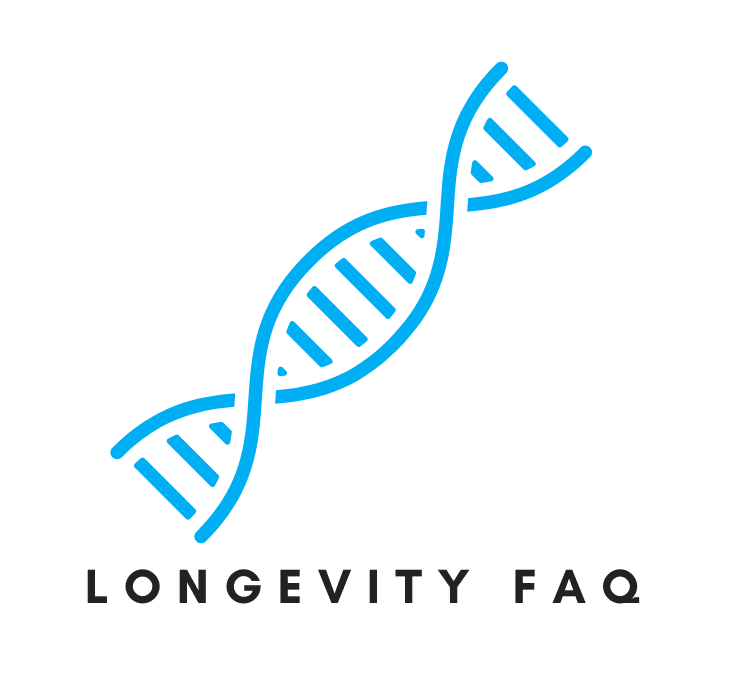Table of Contents
A brand-new scientific preprint titled “Boosting NAD⁺ for Anti-Aging: Mechanisms, Interventions, and Opportunities” has just been published on ChemRxiv. Led by Faruk Alpay and colleagues, the review gathers insights from more than 60 peer-reviewed studies and over 100 supporting works to explain why NAD⁺ — a molecule inside your cells — may be one of the keys to slowing aging.
For anyone passionate about longevity, healthspan, or biohacking, this is essential reading. Let’s unpack it together in everyday language.
What Is NAD⁺, and Why Should You Care?
NAD⁺ (nicotinamide adenine dinucleotide) is a molecule every cell needs to survive. Think of it as:
- Your body’s battery power – running the mitochondria (the “power plants” of cells),
- Your repair currency – fueling DNA repair systems,
- Your defense switch – turning on longevity proteins (sirtuins) that keep cells resilient.
When you’re young, your NAD⁺ levels are high. But as you age, those levels drop sharply. The review calls this decline one of the most reproducible signs of aging.
Why NAD⁺ Levels Decline
The authors identify three main culprits:
- DNA Damage Overload
Imagine your DNA is a library. Every day, small “typos” appear in the books. Special editors (PARP enzymes) rush to repair them — but they burn through NAD⁺ in the process. With age, the typos pile up, repairs take more energy, and NAD⁺ gets drained. - Inflammaging (Chronic Low-Grade Inflammation)
As we age, the body experiences a steady background hum of inflammation — “inflammaging.” This cranks up an enzyme called CD38, which literally eats away at NAD⁺. Think of it as a leaky hole in your fuel tank. - Recycling Failure
Normally, your body recycles NAD⁺ through the “salvage pathway.” But the key recycling enzyme (NAMPT) slows down with age. Imagine your dishwasher breaking — suddenly nothing gets reused, and you’re constantly running out of supplies.
Together, these processes leave your cells underpowered and vulnerable.
Why This Matters for Longevity & Biohackers
For the longevity field, NAD⁺ is a central hub:
- Low NAD⁺ = less energy, weaker repair, faster decline.
- Higher NAD⁺ = stronger metabolism, better resilience, healthier aging.
The review highlights that restoring NAD⁺ can:
- Improve muscle performance and endurance,
- Support healthy blood vessels,
- Reduce insulin resistance,
- Recharge mitochondria,
- And in animals, even extend lifespan by 5–10%.
For biohackers, this suggests NAD⁺ isn’t just a background molecule — it’s a master regulator worth targeting.
NMN: The Body’s Shortcut to More NAD⁺
This is where NMN (nicotinamide mononucleotide) comes in. NMN is a direct building block your body can quickly convert into NAD⁺.
The review shows that:
- In animals, NMN supplementation restores NAD⁺, improves energy, lowers inflammation, and slows aspects of aging.
- In humans, early trials demonstrate that NMN can double NAD⁺ levels, improve muscle metabolism, reduce arterial stiffness, and enhance endurance — with no serious side effects reported so far.
Think of NMN as a spare battery pack you plug into your cells. It doesn’t do the job alone, but it gives your system the charge it needs to keep running at full power.
Real-World Analogy
Picture your body as a smartphone.
- NAD⁺ is the battery life.
- DNA damage and inflammation are like apps running in the background, draining your charge.
- The NAD⁺ recycling pathway is your charging cable — but it frays over time.
Now imagine plugging in a new portable charger (NMN). Suddenly, the phone has more power, runs smoother, and lasts longer before shutting down.
That’s the logic behind using NMN to restore NAD⁺.
The Cautions: Balance Matters
The review doesn’t shy away from caveats. Key warnings include:
- Cancer risk: Because NAD⁺ fuels growth and repair, in some contexts it could also feed tumor growth.
- Hormetic window: More isn’t always better — small, steady doses may be safer than large megadoses.
- Quality control: Supplements vary widely in purity and effectiveness, making it essential to source from trusted providers.
In other words, NMN isn’t a magic bullet, but a powerful tool that must be used wisely.
Why This Review Is Significant
- Comprehensive Map – It consolidates decades of work into a clear picture of how NAD⁺ decline drives aging.
- Mechanistic Clarity – It shows exactly why NAD⁺ falls, not just that it does.
- Practical Guidance – It compares interventions, from supplements like NMN to lifestyle factors (exercise, fasting, circadian rhythm alignment).
- Roadmap Forward – It suggests combining NAD⁺ boosters with other strategies (like senolytics or mTOR inhibitors) for future longevity therapies.
For the biohacking community, it’s one of the most strategic guides yet on how to approach NAD⁺.
Want to Try NMN Yourself?
If you’d like to explore NMN as part of your longevity toolkit, it’s crucial to choose a pure, high-quality source.
And here’s the bonus: use my coupon code LONGEVITYFAQ at checkout for 10% off your order.
Final Takeaway
This new preprint, led by Faruk Alpay, underscores a central truth: declining NAD⁺ isn’t just a marker of aging — it’s a driver. Restoring it with precursors like NMN could help us stay stronger, sharper, and more resilient as we age.
For longevity enthusiasts and biohackers, the message is clear: understanding and supporting your NAD⁺ levels could be one of the smartest moves you make for long-term health.
You can read the full review here:
Boosting NAD⁺ for Anti-Aging: Mechanisms, Interventions, and Opportunities (ChemRxiv)
